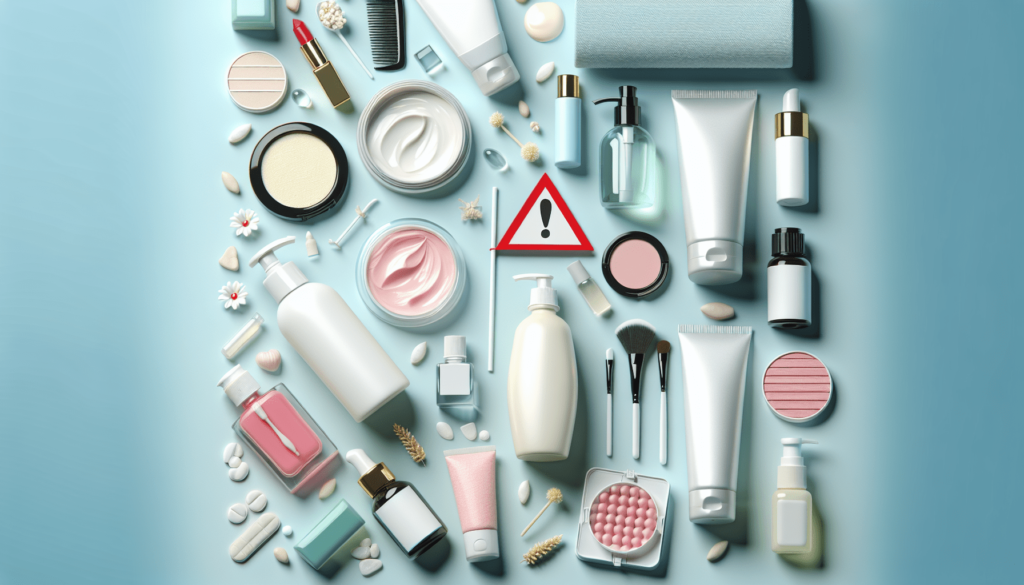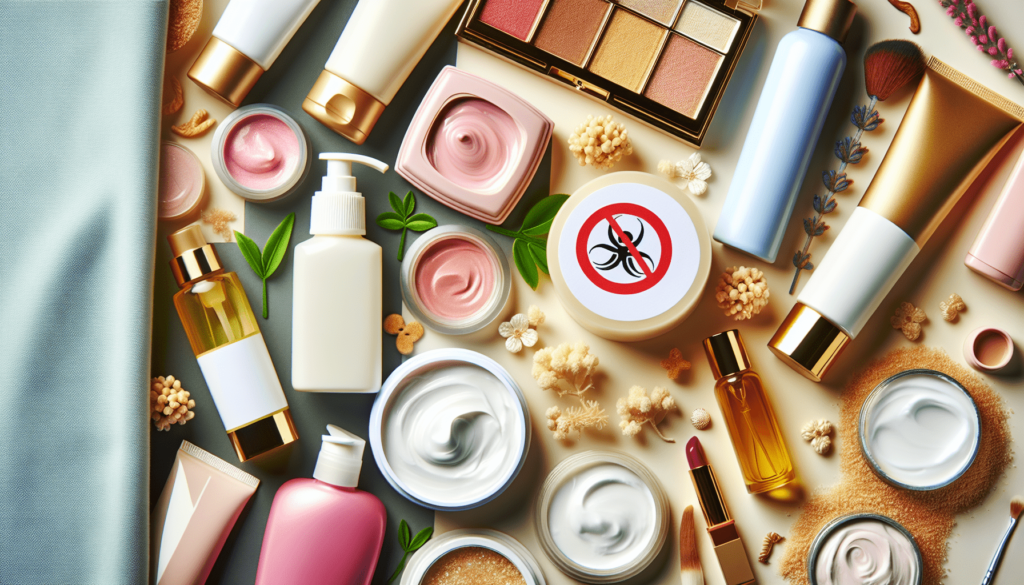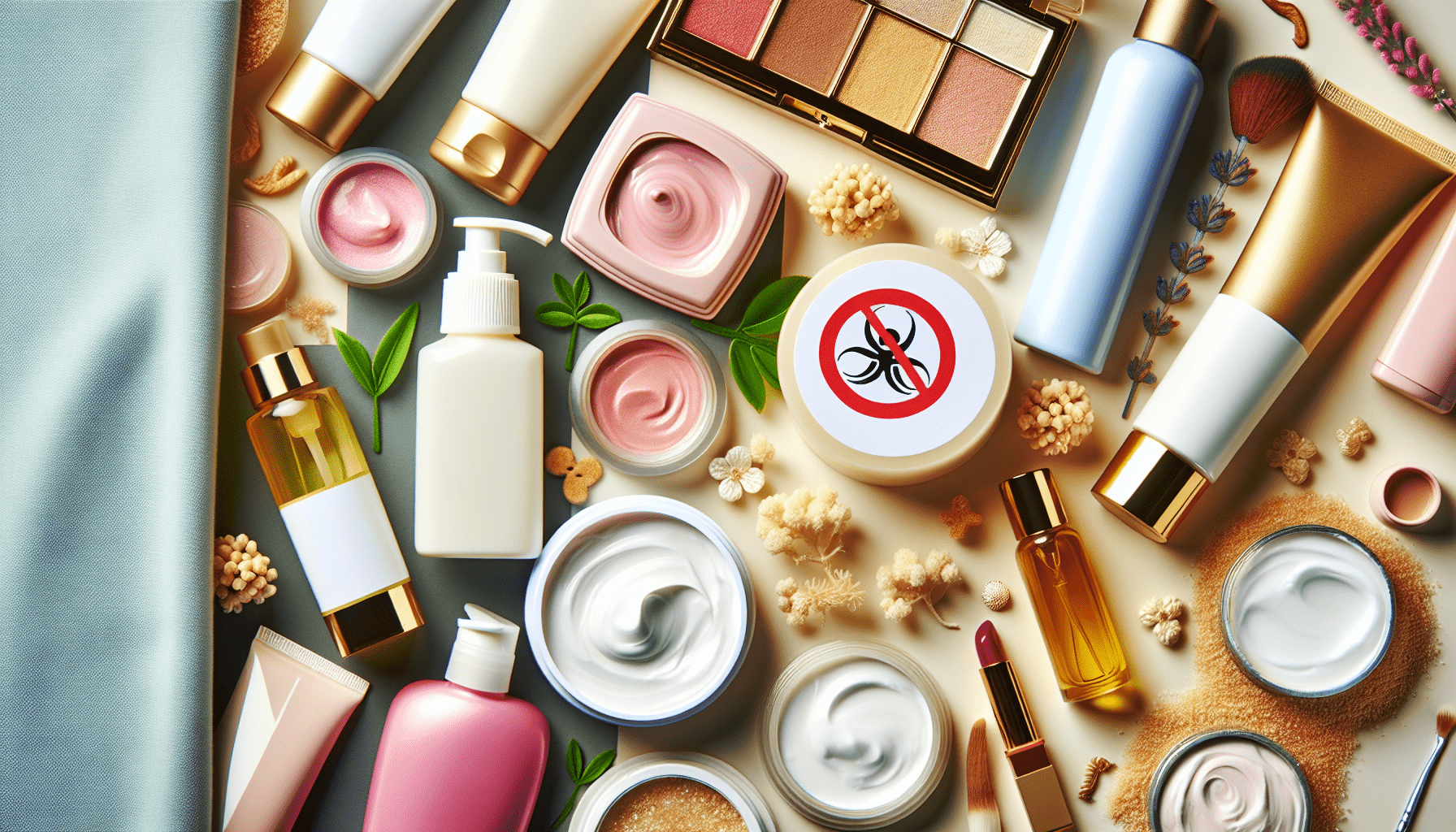Have you ever wondered what’s lurking in your beauty and personal care products that might be causing your skin irritation, redness, or other allergic reactions? It’s time to shine a light on common allergens in these everyday items that you might want to steer clear of for healthier, happier skin.

Understanding Allergens and Their Impact
Allergens are substances that can cause allergic reactions. In beauty and personal care products, these allergens could be preservatives, fragrances, dyes, and other components that together can irritate your skin, eyes, or respiratory system. Regular exposure to these allergens might lead to conditions like contact dermatitis, eczema, or even more severe allergic reactions.
What is an Allergen?
An allergen is a substance that can induce an allergic reaction in susceptible individuals. When your immune system wrongly identifies a typically harmless substance as a threat, it triggers allergic symptoms. This can be mild, such as skin irritation, or severe, like anaphylaxis. Identifying and avoiding these allergens is critical for maintaining skin health and overall well-being.
Allergic Reactions: The Basics
Allergic reactions to beauty and personal care products can manifest in several ways. Common symptoms include rashes, itching, redness, swelling, and even respiratory issues. It’s essential to recognize these signs early to minimize exposure and prevent more severe health implications.
Common Allergens and Their Sources
Let’s examine some of the prevalent allergens found in beauty and personal care products. Understanding where these allergens come from can help you make more informed choices.
Fragrances
Fragrances are one of the top offenders when it comes to allergens. They are used to give products a pleasant smell and can be found in almost anything – from shampoos to deodorants.
Types of Fragrances to Avoid
- Synthetic Fragrances: Often derived from petroleum, these can trigger asthma attacks, headaches, and skin irritations.
- Natural Fragrances: Although less harmful, they can still cause allergic reactions in some individuals.
| Type of Fragrance | Examples | Potential Reactions |
|---|---|---|
| Synthetic Fragrances | Perfumes, Body sprays, Lotions | Skin irritation, Asthma, Headaches |
| Natural Fragrances | Essential oils like lavender, citrus, eucalyptus | Skin irritation, Allergic dermatitis |
Preservatives
Preservatives are essential to extend the shelf life of beauty products. However, some can be harsh on sensitive skin and may lead to allergic reactions.
Notable Preservatives to Avoid
- Parabens: Widely used in cosmetics to prevent the growth of harmful bacteria and mold. Known to disrupt hormones, which can lead to various health issues.
- Formaldehyde Releasers: Used in many beauty products and known to cause skin sensitivity and irritation.
- Isothiazolinones: Common in products like shampoos and moisturizers but can cause severe allergic reactions.
| Preservative Type | Commonly Found In | Potential Side Effects |
|---|---|---|
| Parabens | Lotions, Shampoos | Hormonal disruption, Allergic reactions |
| Formaldehyde Releasers | Nail polish, Hair products | Skin irritation, Sensitization |
| Isothiazolinones | Moisturizers, Shampoos | Allergic dermatitis, Severe skin reactions |
Colors and Dyes
Artificial colors and dyes add visual appeal to products but can contribute to allergic reactions.
Harmful Dyes to Watch Out For
- Coal Tar Dyes: Often labeled as Cl or FD&C followed by a color and number (e.g., FD&C Yellow No. 5). Known to cause skin irritations and are potential carcinogens.
- Natural Dyes: While safer, can still cause reactions in sensitive individuals.
| Dye Type | Commonly Found In | Potential Side Effects |
|---|---|---|
| Coal Tar Dyes | Lipsticks, Eyeshadows | Skin irritation, Carcinogenic risks |
| Natural Dyes | Henna, Beetroot products | Skin irritation, Allergic reactions |
Emollients and Occlusives
Emollients and occlusives help to soften and lock moisture into the skin. However, not all are created equal regarding their potential allergenic effects.
Common Allergens in Emollients and Occlusives
- Lanolin: Derived from sheep’s wool and can cause allergic reactions in some individuals.
- Petrolatum: Often used in creams and lotions but can cause acne and other skin issues in some people.
- Mineral Oil: Widely used, but potentially comedogenic and can cause irritation.
| Ingredient | Commonly Found In | Potential Side Effects |
|---|---|---|
| Lanolin | Moisturizers, creams | Skin irritation, Allergic reactions |
| Petrolatum | Ointments, creams | Acne, Skin irritation |
| Mineral Oil | Lotions, moisturizers | Skin irritation, Potential acne |
Sunscreens
Sunscreens protect your skin from harmful UV rays. However, certain chemical sunscreens can cause allergic reactions and other skin issues.
Sunscreen Ingredients to Avoid
- Oxybenzone: Known to cause allergic skin reactions and hormone disruption.
- Octinoxate: Can lead to allergic reactions and has potential hormonal effects.
- PABA (Para-aminobenzoic acid): Previously common, now mostly phased out due to high allergic reaction rates.
| Sunscreen Ingredient | Commonly Found In | Potential Side Effects |
|---|---|---|
| Oxybenzone | Sunscreen lotions, creams | Skin irritations, Hormonal disruption |
| Octinoxate | Lip balms, Sunscreen lotions | Allergic reactions, Hormonal effects |
| PABA | Older sunscreen products | High rate of allergic reactions |
Tips for Identifying and Avoiding Allergens
Navigating the world of beauty and personal care products to avoid allergens can be a bit daunting. Here are some tips to help you identify and avoid these troublesome ingredients.
Reading Labels: The First Line of Defense
Become a label detective. The ingredient list on the back of your products is a goldmine of information. Look out for the chemicals and compounds we’ve discussed and avoid products that contain them.
Important Label Terminology
- Hypoallergenic: Products labeled as hypoallergenic are formulated to minimize the risk of causing allergic reactions.
- Fragrance-Free: These products do not contain added fragrances, synthetic or natural.
- Non-Comedogenic: Non-comedogenic products are less likely to cause acne or clog pores.
Patch Testing: A Safety Net
Before using a new product, especially if you have sensitive skin or a history of allergies, start by doing a patch test. Apply a small amount of the product on your inner wrist or elbow and wait 24-48 hours to see if any reaction occurs.
Alternatives to Common Allergens
There are numerous alternatives to common allergens that can be just as effective, without provoking adverse reactions.
Safe Alternatives
- Fragrances: Opt for fragrance-free or naturally scented products using ingredients like chamomile or aloe vera.
- Preservatives: Look for products that use safer preservatives like potassium sorbate or sodium benzoate.
- Colors and Dyes: Choose products with natural coloring agents or no added colors.
- Emollients: Consider using plant-based oils such as jojoba oil, shea butter, or coconut oil.
- Sunscreens: Mineral sunscreens using zinc oxide or titanium dioxide are less likely to cause allergic reactions.
Special Considerations For Sensitive Skin
Those with sensitive skin must be even more vigilant about the products they use. Sensitive skin can react more intensely to allergens, making it crucial to choose the right products.
Hypoallergenic Products
While no product can guarantee zero reactions, hypoallergenic products are formulated to minimize irritation. Look for brands and products specifically marketed for sensitive skin.
Natural and Organic Products
Natural and organic products are free from many of the chemicals and synthetic substances that can trigger allergies. However, remember that natural ingredients can still cause reactions, so always patch test new products.

Frequently Asked Questions
What should I do if I experience an allergic reaction?
First, discontinue use of the product immediately. Cleanse the affected area with mild soap and water. You may also apply a cold compress or anti-itch cream to the area. If the reaction is severe, consult with a healthcare professional.
Are natural and organic products always safer?
While they’re often free of synthetic chemicals and preservatives, natural and organic products can still contain potential allergens. It’s important to read labels and perform patch tests even with these products.
How can I find out what I’m allergic to?
Allergy testing by a dermatologist or allergist can help you identify specific allergens. Patch testing at home with new products can also help you determine safe options.
Can I develop allergies to products I’ve been using for years?
Yes, it’s possible. Allergies can develop suddenly, even to products you’ve used previously without issues. If you notice a reaction to a familiar product, re-evaluate its ingredients and consider discontinuing use.
Is it possible to entirely avoid allergens in personal care products?
While it’s challenging to avoid all allergens completely, being informed and cautious can significantly reduce your exposure. Choose products carefully, read labels, and listen to your body’s responses to different ingredients.
Conclusion
Navigating the world of beauty and personal care products can be tricky, especially when considering the myriad of potential allergens. However, by being informed and vigilant, you can make choices that help keep your skin healthy and happy. Remember to read labels, perform patch tests, and opt for hypoallergenic or natural products whenever possible. Taking these steps can go a long way in avoiding unwanted allergic reactions and maintaining a glowing, irritation-free complexion.
